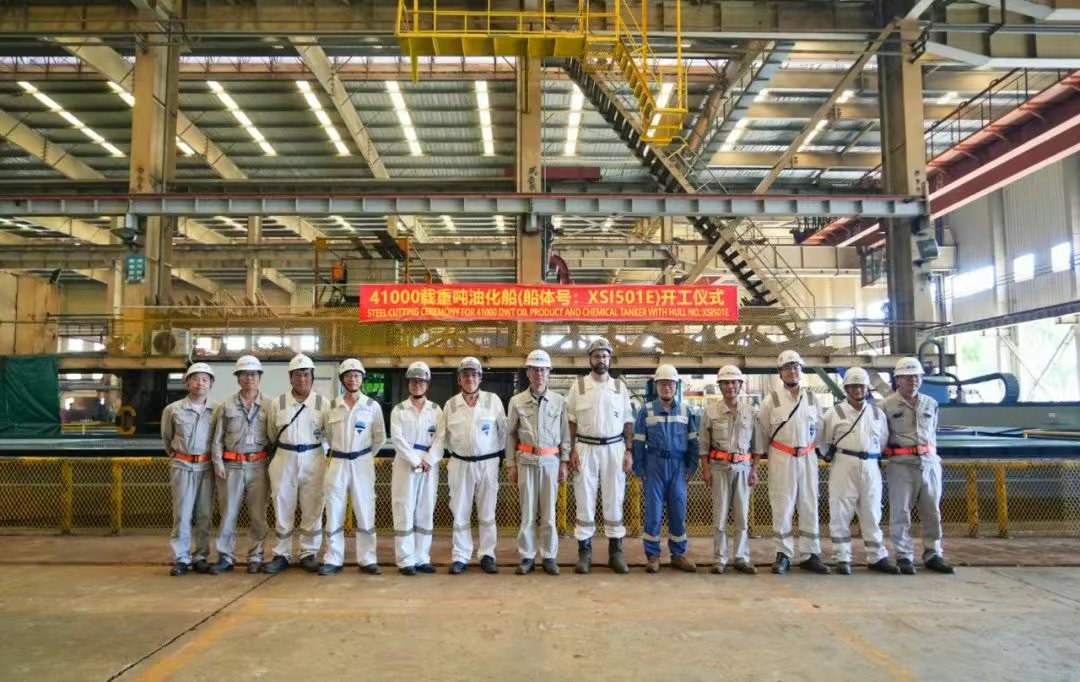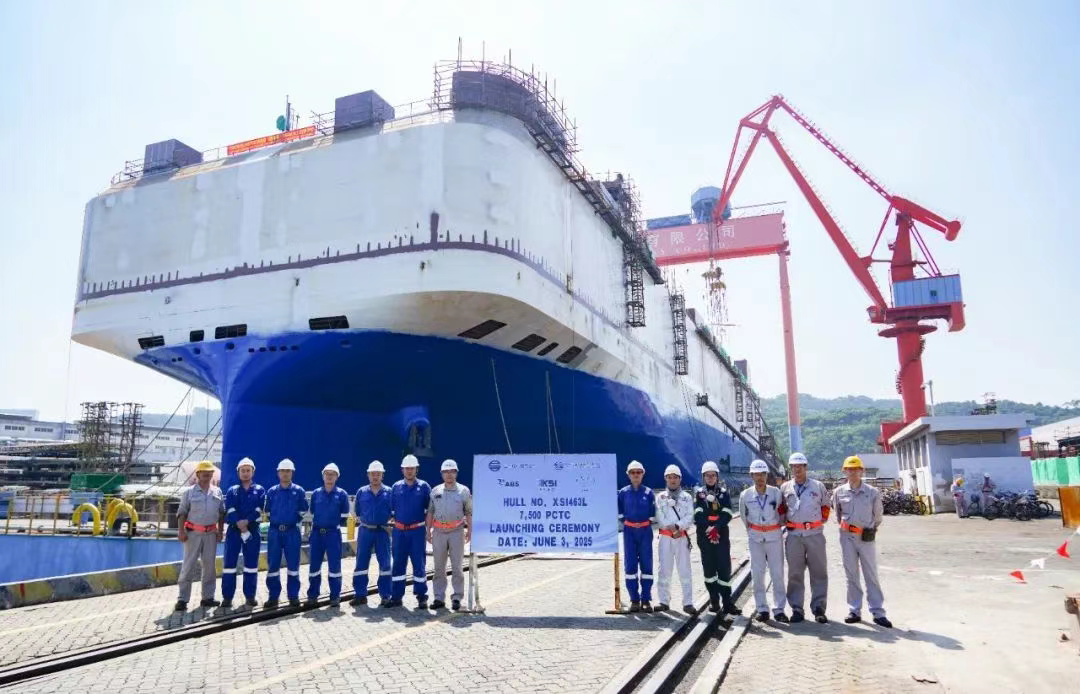Recently, Xiamen Shipbuilding Industry Co., Ltd.(XSI) under Fujian Shipbuilding Industry Group, completed two production milestones.
On June 2nd, Xiamen Shipbuilding Industry commenced construction of a 41,000 DWT chemical/oil tanker (Hull No. XSI501E), marking the fifth vessel in this series to enter production.

The 41000DWT oil tanker is 199.9 meters in length, with a designed deadweight of 41,000 tons at draft and a service speed of about 13 knots.
Classed by DNV, the vessel is designed with safety, efficiency and environmental protection as the core concept, integrating three significant advantages: ice navigation enhancement, intelligent power management and ultra-low emission technology. It not only perfectly meets the current shipping market’s urgent need for diversified liquid cargo transportation, but also provides a benchmark solution with great reference value for global carbon reduction goals.
On June 3rd, the 7,500 CEU LNG dual-fuel PCTC (Hull No. XSI463L), built by Xiamen Shipbuilding Industry for Japan’s Santoku Senpaku Co., was successfully launched, officially entering the outfitting and mooring test phase.

The 7,500 CEU LNG dual-fuel PCTC (pure car and track carrier) has an overall length of 199.9m, a beam of 38m, a depth of 14.8m, and a design draft of 8.65m. It has a total of 13 automobile decks, of which 9 are fixed and 4 are movable, and it can provide 7,500 standard parking spaces, and the internal linkage between the decks is realized through a fixed/movable ramp, and it is an automobile transport vessel driven by a single propeller and a dual-fuel main engine.
The PCTC meets the strict TIER III emission standards of the International Maritime Organization and adopts a number of advanced green environmental protection technologies, which will significantly reduce the emissions of sulfur oxides, nitrogen oxides, particulate matter and carbon dioxide. After being put into operation, it will contribute to the dual carbon goals of China’s automotive industry chain.


